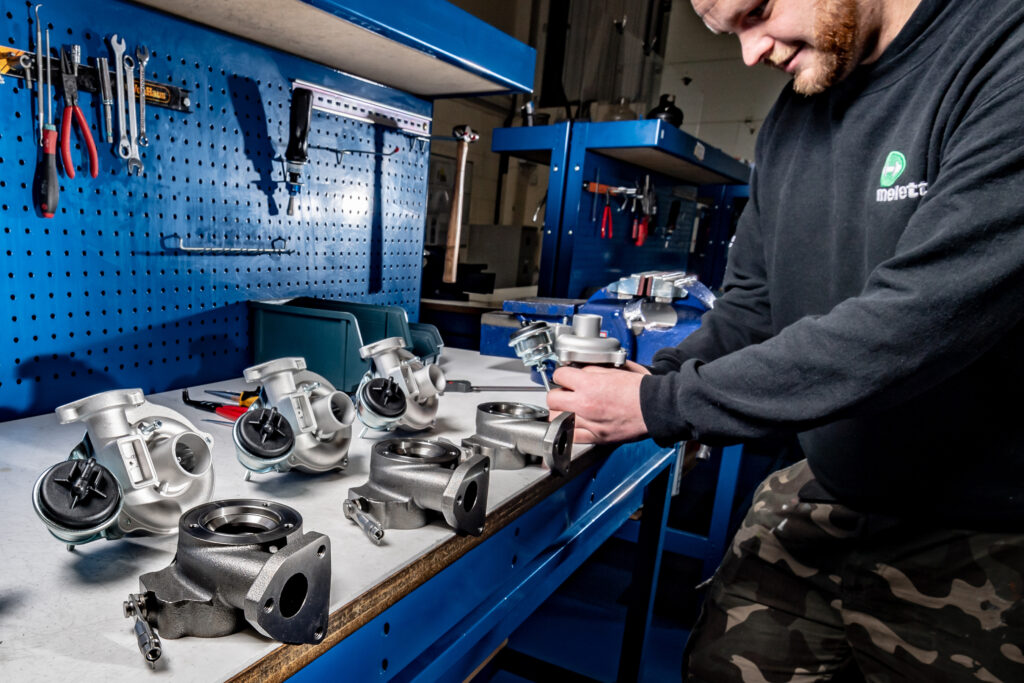Turbochargers have become essential to manufacturers seeking to build engines smaller but with similar or higher power delivery to meet emissions requirements.
This has inherently led to more turbo-related faults arriving at the hands of technicians, and Melett product manager Tom Wright has several top tips for best practice to avoid scary costs for garages and their customers.
“As over 90% of turbocharger failures are consequential of other on-vehicle issues, getting to the bones of the problem and identifying the root cause before fitting the new turbo is key.

“Oil contamination is one of the top killers of a turbocharger and can happen in various ways. When fitting a turbocharger, if the oil system is not serviced correctly, debris from the previous failure can remain in the system, which can contaminate the new oil and cause premature turbo failure within minutes,” Wright says.
To avoid failure through insufficient lubrication or oil contamination, oil inlet pipes should be inspected, cleaned or preferably, replaced to remove carbon deposits or sludge that could restrict oil flow and/or contaminate the new oil. In addition, in all installations of a turbocharger, priming the oil feed and oil systems is a must, as this will prevent the turbo from instant failure through a lack of lubrication caused by a delay in the delivery of oil.
Modifying driving style can prolong the life of the turbocharger and other vehicle components. This is as simple as allowing time for the engine and turbocharger to warm up before accelerating hard and cool down before switching off.

“If a turbo has been worked hard then operating temperatures will be considerably higher. It’s important to allow the turbo time to cool, as shutting the engine off immediately after a spirited drive can cause the oil to carbonise within the turbo.” Wright adds.
Driving style also impacts the operation of the diesel particulate filters (DPF), which have been compulsory to fit to diesel vehicles since 2009. In turbocharged, diesel-powered vehicles, it’s important for drivers to perform regular longer journeys to allow DPF regeneration to occur successfully. This can be done via a 10-15 minute journey on a motorway at mid-high revs.
A blocked DPF prevents exhaust gas passing through the exhaust system at the required rate. As a result, back pressure and exhaust gas temperatures increase within the turbine housing of the turbocharger.
“Increased exhaust gas temperature and back pressure can affect the turbocharger in a number of ways, including problems with efficiencies, boost levels, oil leaks, carbonisation of oil within the turbo and exhaust gas leaks from the turbo,” Tom Wright explains.
“It’s therefore important that technicians maintaining, and servicing diesel-engine cars pay attention to the condition of the DPF in the event of turbo failure to prevent premature failure of the new turbocharger.”
Just as with the exhaust system, any blockages, restrictions, leaks or contaminants in the air intake system will impact the turbochargers performance and could lead to failure.
“It’s recommended that the air filter is replaced annually to ensure that dirty air passing through the turbo is minimised. Contaminated air with pollutants, dust and debris can lead to poor performance and foreign object damage to the compressor. Blocked or restricted filters can lead to incorrect pressures in the compressor housing and therefore oil leaks, which can lead to failure,” Wright concludes.


